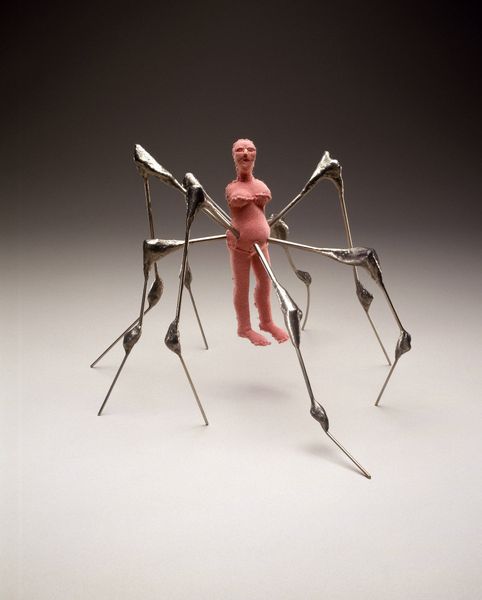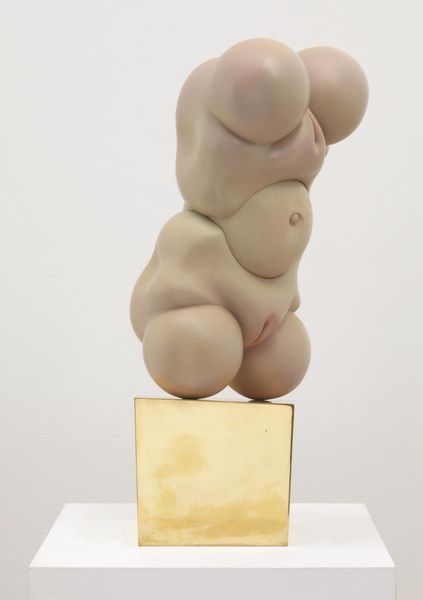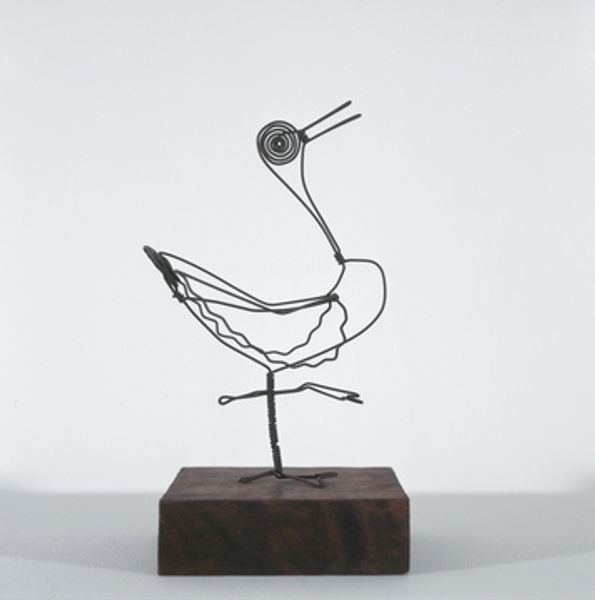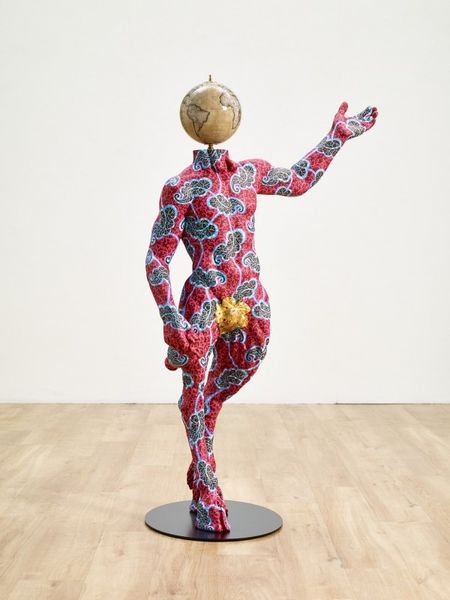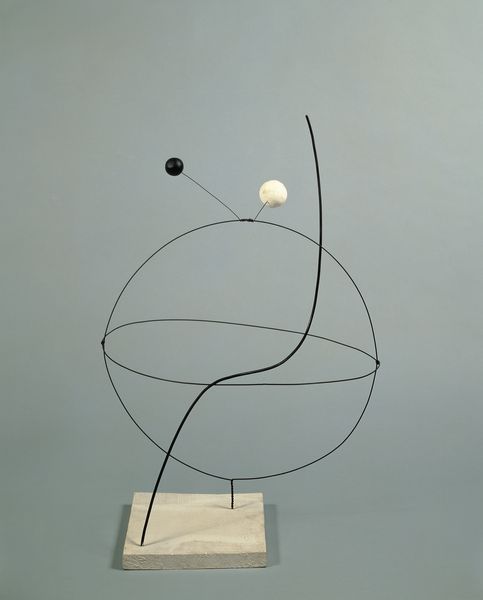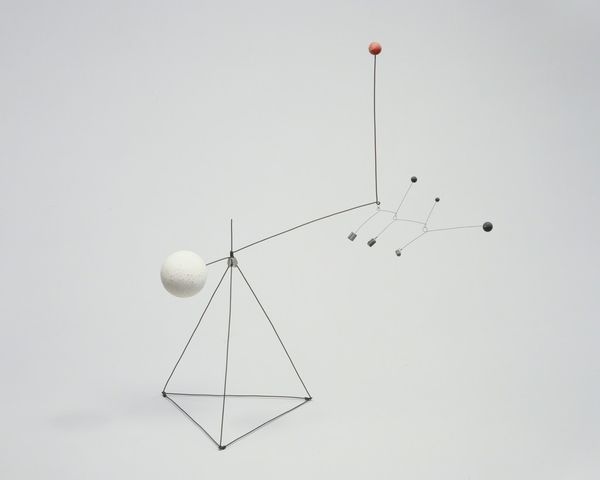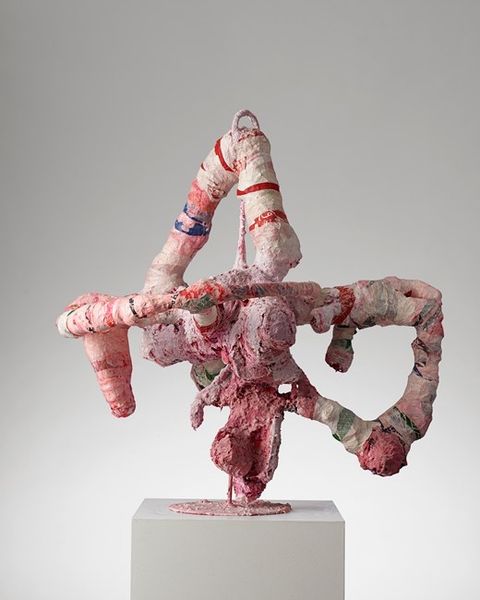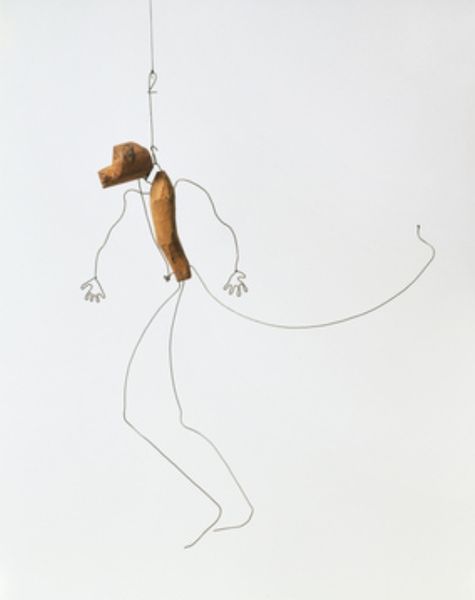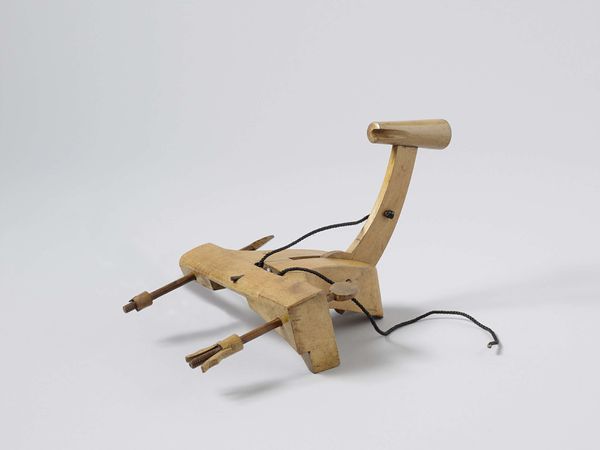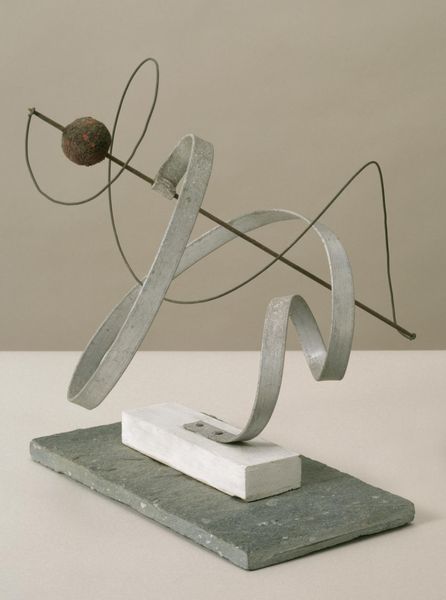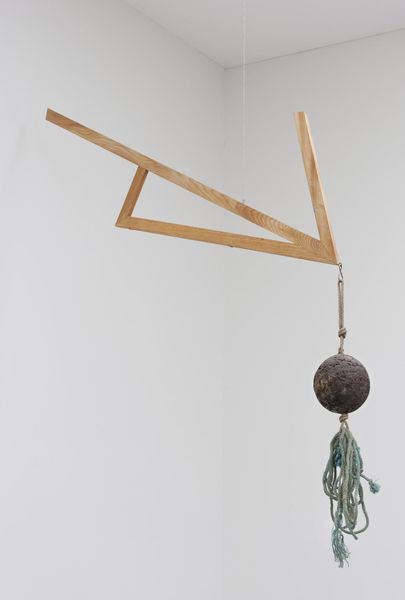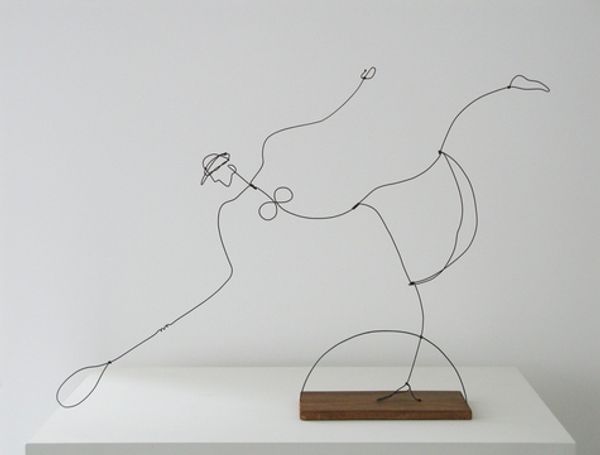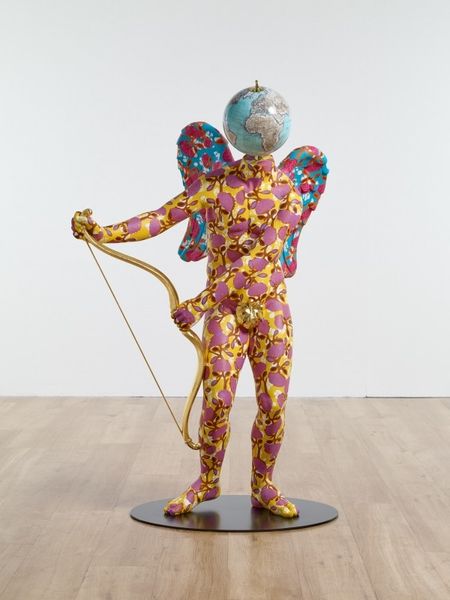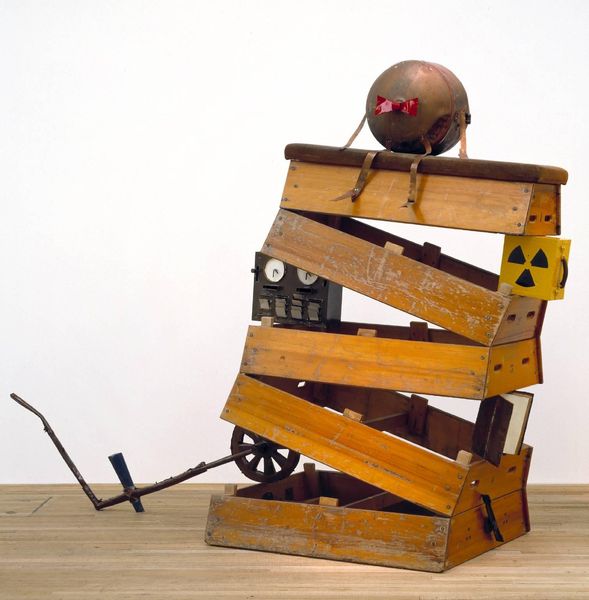
The Machine-Gunneress in a State of Grace 1937
0:00
0:00
hansbellmer
Museum of Modern Art (MoMA), New York City, NY, US
mixed-media, sculpture, wood
#
mixed-media
#
constructivism
#
figuration
#
sculpture
#
wood
#
surrealism
#
erotic-art
Copyright: Hans Bellmer,Fair Use
Editor: So, here we have Hans Bellmer's "The Machine-Gunneress in a State of Grace" from 1937, a mixed-media sculpture incorporating wood. The unsettlingly smooth, fleshy forms combined with the harsh mechanics give me a strong feeling of fragmented, almost violated, innocence. How do you interpret this work, considering the political landscape of the time? Curator: This sculpture is incredibly poignant when viewed through the lens of pre-war anxieties. Bellmer, deeply disturbed by the rise of Nazi ideology and its promotion of idealized, hyper-masculine figures, created these dolls as a form of protest. They represent a deconstruction of that very ideal, fracturing and reassembling the female form in ways that challenge societal expectations and control over the body. Editor: So it's less about eroticism, though some might argue that, and more about actively resisting fascism’s obsession with perfection and control? Curator: Precisely. Consider how the "perfection" pushed by the Nazi regime affected art and cultural expression. Bellmer uses Surrealism, a movement already challenging traditional artistic norms, to undermine this imposed aesthetic. The fragmented, doll-like figure, the suggestion of puppetry – these elements all serve to critique the objectification and manipulation inherent in totalitarian ideologies. Do you see how the very act of displaying this challenged public perception and spurred discussions, no matter how controversial, around these ideals? Editor: Absolutely. It reframes how we understand the relationship between art, power, and the individual. By subverting conventional representation, he forces the viewer to confront uncomfortable truths. This feels deeply subversive, even now. Curator: It highlights art's powerful ability to function as both a reflection of and a rebellion against societal forces. It makes me wonder what the state of such a complex artwork could convey to modern audiences… Editor: That's a perspective I hadn't considered fully before. It adds layers of historical and social context to my initial reading of the piece. Thank you!
Comments
No comments
Be the first to comment and join the conversation on the ultimate creative platform.
